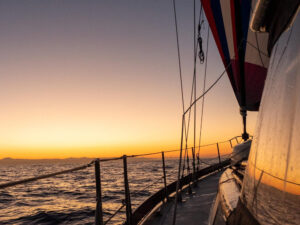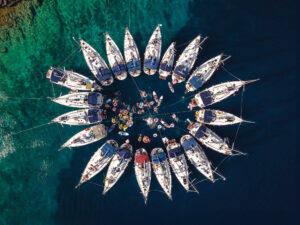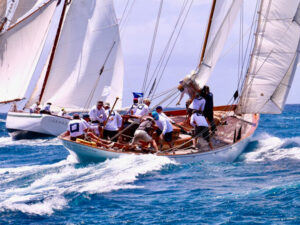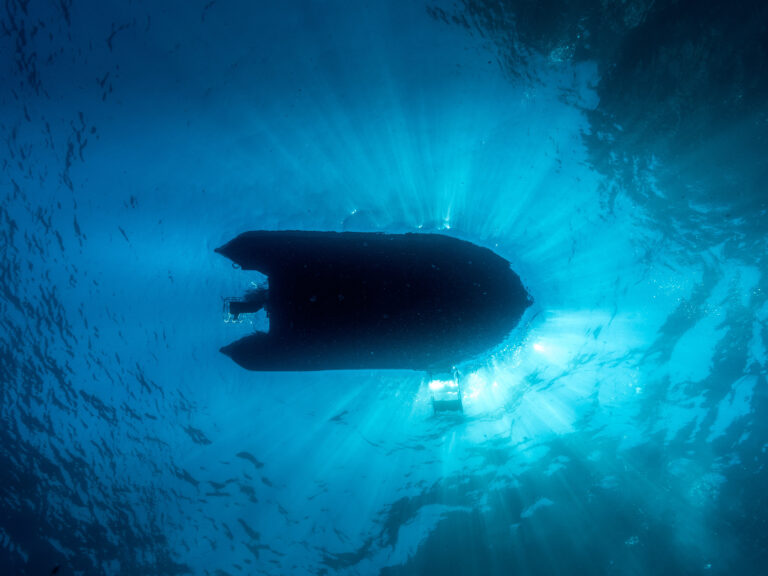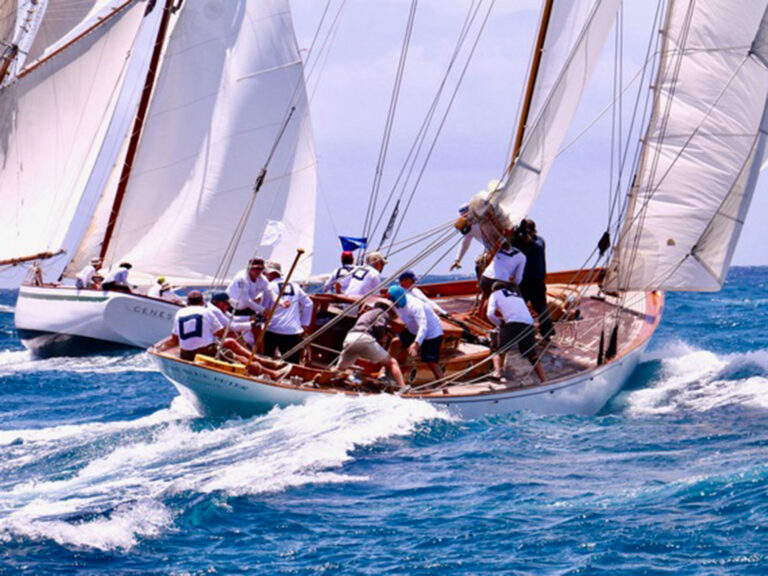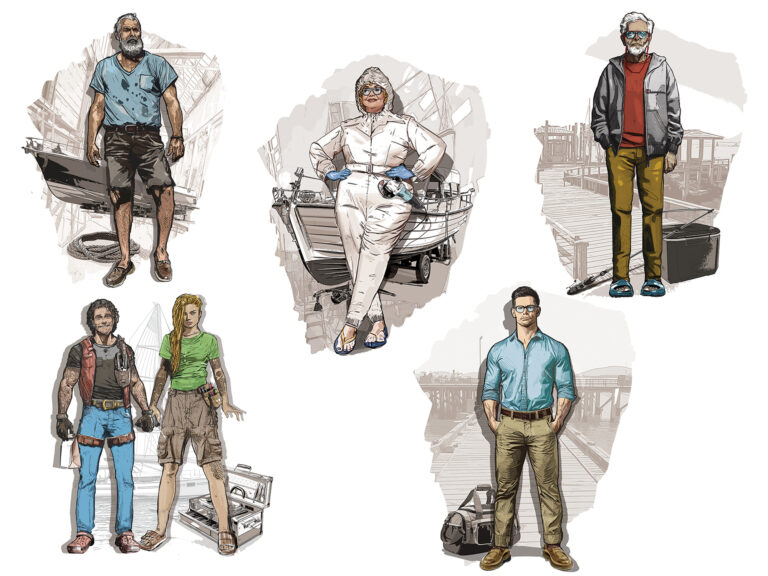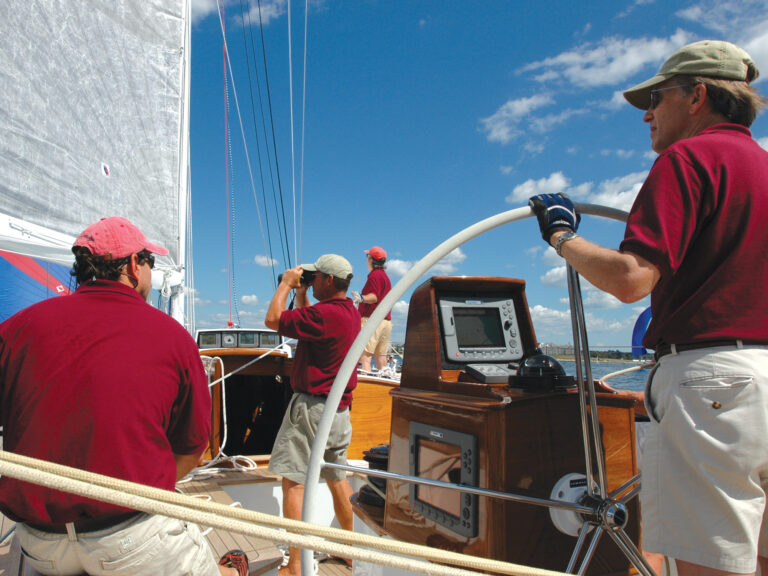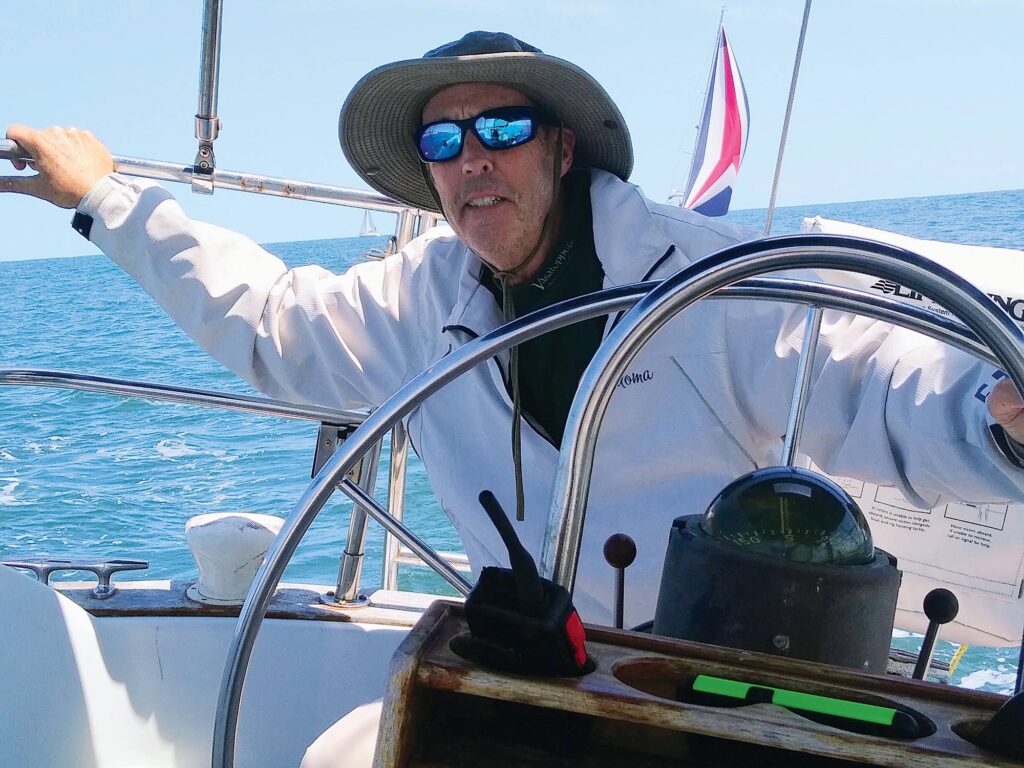
I confess: Beyond boiling eggs or making coffee, I’ve never been much good in the galley. I cook when I have to, and tell guests that my forgettable meals are hot, will keep them alive, and…would anyone else like to cook?
A trip through the Bahamas on my Catalina 34 changed all that.
I’d bought the boat years before, after crewing on other people’s boats. Eventually, I found the 1992 Catalina 34 for sale: long waterline, large sail area, and lines leading aft for good singlehanding capability. Below, the boat had a roomy salon, a galley and a comfortable V-berth—perfect. My fiancé, Kanako, was brand-new to sailing back then, but she was enthusiastic. We both liked what we saw.
I signed the papers, cast off the lines, and discovered that there’s a big difference between sailing a Hobie 16 and sailing a larger keelboat. I well remember the knots in my stomach every time we left the dock, and my frustrating attempts to avoid solid objects. How in the world, I lamented, were the two of us going to manage this boat?
The answer: lots of practice. Together we christened her Ukiyo, Japanese for “the floating world.” We were married on the foredeck and got underway the same day; to my delight, Kanako quickly picked up the basics and stood her watches as we traveled through the Florida Keys and up the East Coast to the Chesapeake Bay, anchoring and dodging hurricanes as we went.
Years of sailing later, I decided to take a hiatus from my job to fulfill a long-held dream: a solo voyage through the Bahamas. Like me, the boat had aged. After a boisterous solo crossing to Nassau, I was having almost daily maintenance issues. With each new out island came a vexing new problem: an electrical short circuit, a broken steering cable, a leaky freshwater pump. I learned humbling lessons on self-sufficiency and, most of all, the importance of bringing spare parts for everything. But even then I knew that it was just part of the adventure of voyaging far afield.
On a passage to Warderick Wells, the autopilot started shutting down. (Never ask “What else can go wrong?” on a boat.) The four lead-acid batteries were old. Despite charging daily with a solar panel and the engine, they wouldn’t hold voltage.
This could have been a deal-breaker—the beauty of the Bahamas comes with a paucity of marine services. I had to find my own solution. At anchor, I jealously guarded the house bank by eschewing the cabin lights in favor of an oil lamp and listening to Cuban stations on the portable AM radio. For an anchor light, I used a solar garden lamp from a big-box store.
What about meals? Using the fridge was out of the question. Warm beer, boiled pasta, tomato sauce and canned chicken got old really fast.
Rooting through the galley shelves one night, I came across a recipe tucked into an old book I’d picked up at a yard sale, handwritten on a yellowing piece of paper. It was for home-baked bread. In my naivete, I nearly crumpled it—I’d never baked anything resembling bread. Surely it would require culinary expertise. And refrigerated ingredients.
However, I also knew that bread took time, which I had in abundance. My propane oven used only a soupçon of electricity—another plus. As I paused to read the ingredients, I realized that I had everything required, right down to the warm beer. Desperate for something tasty, I decided to take a gamble and try it.
I followed those fading directions like a surgeon taking a certification exam. By the following evening, as the sun slid down while I read a book in the cockpit, a delightful aroma wafted up from the galley. In the log, I wrote: “Skipper treats crew to fresh-baked bread!”
For the first time, I looked forward to dinners on board, and was OK with the possibility that other things might break, as long as the oven kept working.
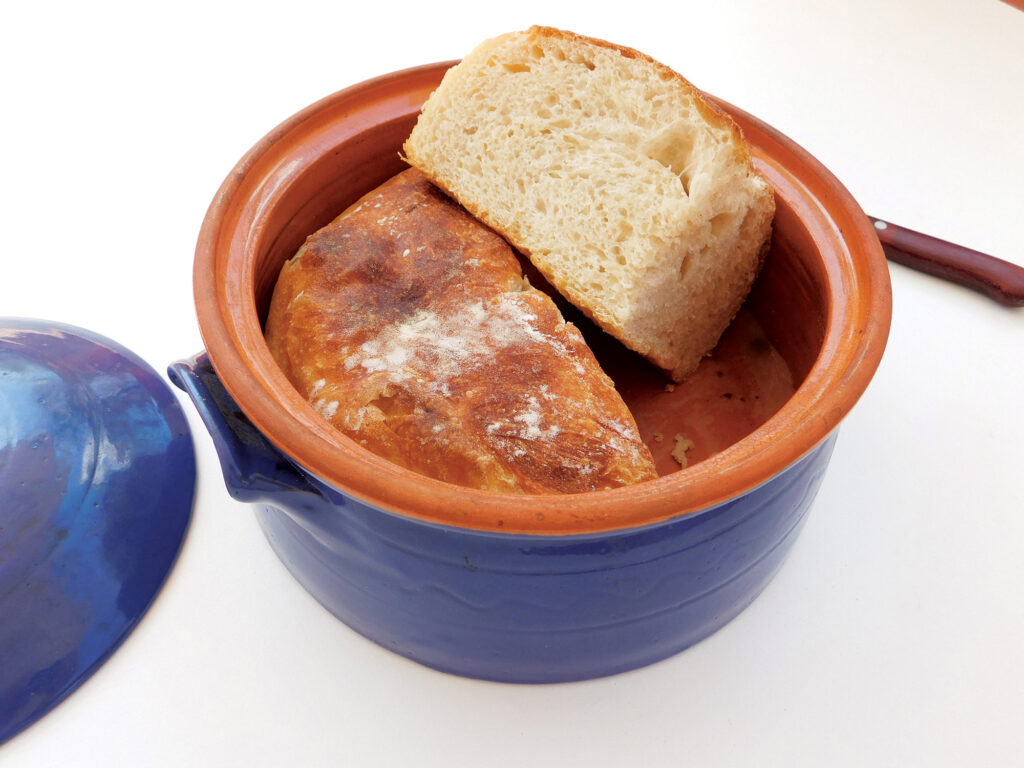
Solo Sailor’s Easy Bread Recipe (yields an 8½-inch round loaf)
Ingredients
- 3 cups all-purpose flour
- 1½ tsp. salt
- ¼ tsp. instant or rapid-rise yeast
- 1 cup lukewarm water
- 6 tablespoons mild lager beer, room temperature
- 1 Tbsp. white vinegar
- ½ cup nuts or raisins (optional)
- vegetable oil or cooking spray
Note: You’ll need a 9-by-4-inch ovenproof pot with a lid.
Preparation
Mix flour, salt and yeast in a large bowl. Add water, beer and vinegar. Stir and fold repeatedly until a shaggy ball is formed. Cover bowl tightly with plastic wrap, and let rise in a warm, draft-free spot for 8 to 10 hours.
Add nuts or raisins to dough, if using. Knead dough until stretchy and elastic. Shape into a round loaf.
Line the pot with baking paper, and spray or brush with oil. Add dough. Cover pot with plastic wrap again, and let rise until doubled, up to 2 hours.
Preheat oven to 425 degrees Fahrenheit. Lightly flour dough top, and use a sharp knife or razor to make a ½-inch-deep gash in it. Place the lid on the pot and bake for 30 minutes.
Remove the lid and continue to bake until the crust is deep brown (10 to 20 minutes). Transfer to a wire rack and cool for about 2 hours before slicing, if you can wait that long.
Prep time: 12 hours, including rise times
Difficulty: easy
Best made: at anchor
Cook’s Note: Adding a small amount of vinegar to bread dough improves elasticity and texture, enhances browning, and helps keep bread fresh longer.
Editor’s note: Got a favorite boat meal you’d like to share? Email us at editor@cruisingworld.com.

